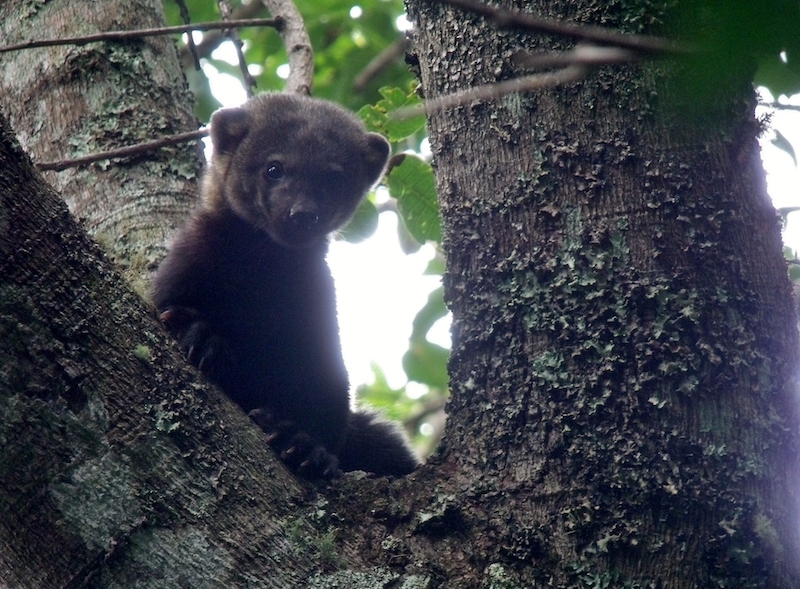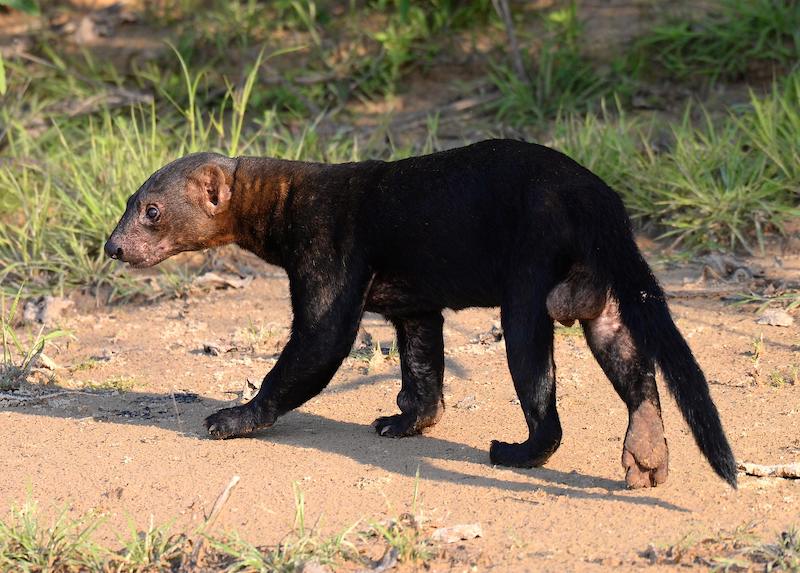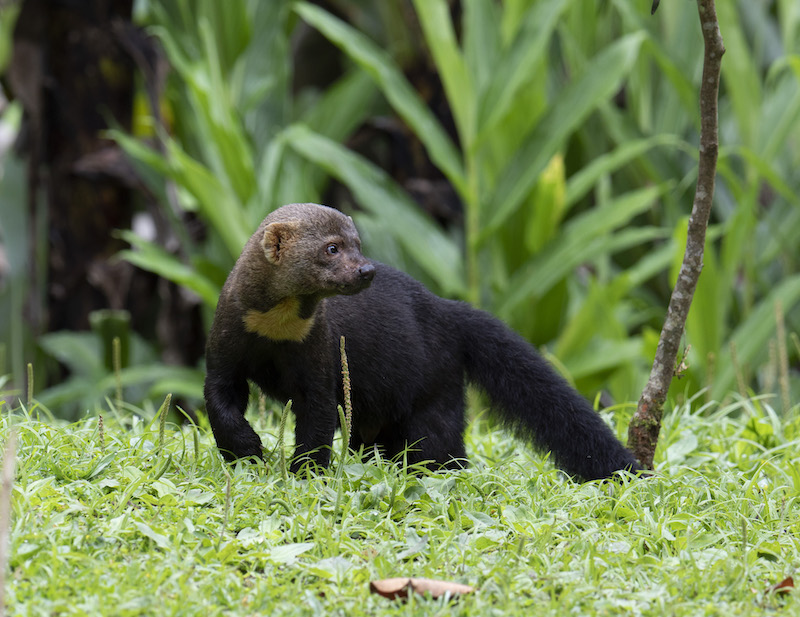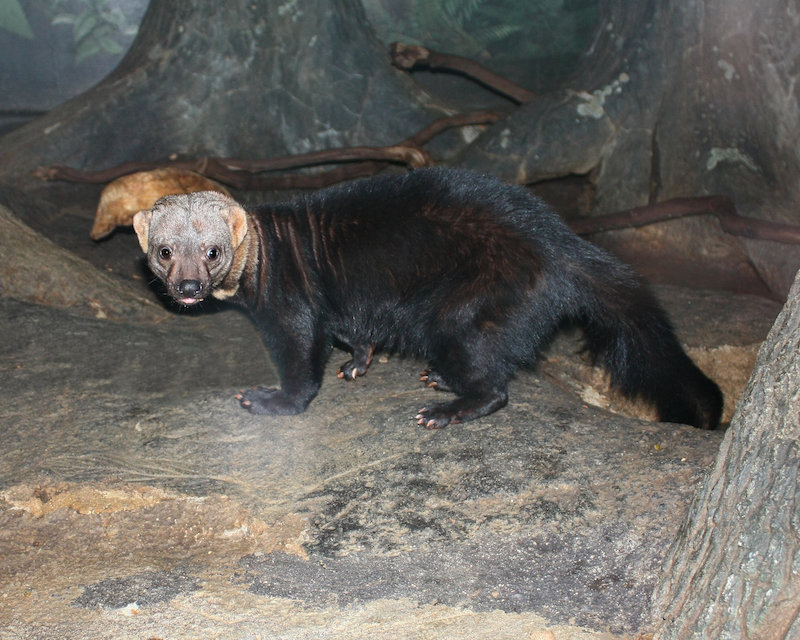What is a Tayra?

Kingdom: Animalia
Phylum: Chordata
Subphylum: Vertebrata
Class: Mammalia
Order: Carnivora
Suborder: Caniformia
Family: Mustelidae
Genus: Eira
Species Eira barbara
The Tayra (Eira barbara ) is an omnivorous animal from the weasel family, native to the Americas. It is the only species in the genus Eira.
Tayras are also known as the Tolomuco or perico ligero in Central America, Motete in Honduras, Irara in Brazil, san hol or viejo de monte in the Yucatan Peninsula, and high-woods dog (or historically chien bois ) in Trinidad. The genus name Eira is derived from the indigenous name of the animal in Bolivia and Peru, while barbara means «strange» or «foreign».
What does it look like?

The Tayra is a forest-dwelling mammal native to the Americas. These animals belong to the weasel family. They have long, slender bodies with an appearance similar to weasels and martens. Males are more prominent and slightly more muscular than females. They have short, dark brown to black fur which is relatively uniform across the body, limbs, and tail, except for a yellow or orange spot on the chest. The hair on the head and neck is much paler, typically tan or greyish in color. Albino or yellowish individuals are also known and are not rare among tayras. Their feet have toes of unequal length with tips that form a strongly curved line when held together. The claws are short and curved, but strong, adapted for climbing and running rather than digging. The pads of the feet are hairless but are surrounded by stiff sensory hairs. The head has small, rounded ears, long whiskers, and black eyes with a blue-green shine.
Distribution

Countries
Argentina, Belize, Bolivia, Brazil, Colombia, Costa Rica, Ecuador, El Salvador, Guatemala,
Biomes
Tropical dry forests, Tropical moist forests, Tropical savanna
Tayras are found across most of South America east of the Andes, except for Uruguay, eastern Brazil, and all but the most northerly parts of Argentina. They are also found across the whole of Central America, in Mexico as far north as southern Veracruz, and on the island of Trinidad. They generally live only in tropical and subtropical forests, although they may cross grasslands at night to move between forest patches, and they also inhabit cultivated plantations and croplands.
Habits and Lifestyle
Tayras are diurnal animals, although occasionally active during the evening or at night. They usually travel alone or in pairs, but occasionally can be seen in small groups of 3-4 individuals. They usually move rapidly through the trees or on the ground. Tayras are very fast runners and despite their poor eyesight are excellent climbers as well. They are able to climb down smooth tree trunks from heights of more than 40 meters. On the ground or on large horizontal tree limbs, they use a bounding gallop when moving at high speeds. They can also leap from treetop to treetop when pursued. They generally avoid water but are capable of swimming across rivers when necessary. They locate prey primarily by scent and actively chase it once located, rather than stalking or using ambush tactics. Tayras live in hollow trees or burrows in the ground. Individual animals maintain relatively large home ranges, with areas up to 24 km2 (9.3 sq mi). They may travel at least 6 km (3.7 mi) in a single night. These are usually silent animals, but when alarmed, tayras produce a short, barking call and may snort, growl, and spit while seeking protection in a nearby tree. They can also communicate with the help of yowls, snarls, or clicks when in groups.
Diet and Nutrition

Tayras are opportunistic omnivores, hunting rodents, and other small mammals, as well as birds, lizards, and invertebrates. They will also climb trees to get fruit and honey.
Mating Habits
Reproduction season: year-round
Pregnancy duration: 63-67 days
Baby carrying: 1-3 kits
Independent age: 10 months
Baby name: Kit, pup.
Little is known about the mating system of this species. Tayras breed year-round and gestation lasts from 63 to 67 days. Females give birth to 1-3 young, which they care for alone. The young are altricial, being born blind and with closed ears, but are already covered in a full coat of black fur. They weigh about 100 g (3.5 oz) at birth. Their eyes open at 35 to 47 days, and they leave the den shortly thereafter. They begin to take solid food around 70 days of age and are fully weaned by 100 days. Hunting behavior begins as early as three months, and the mother initially brings her offspring wounded or slow prey to practice on as they improve their killing technique. The young are fully grown around 6 months old and leave their mother to establish their own territory by 10 months.
